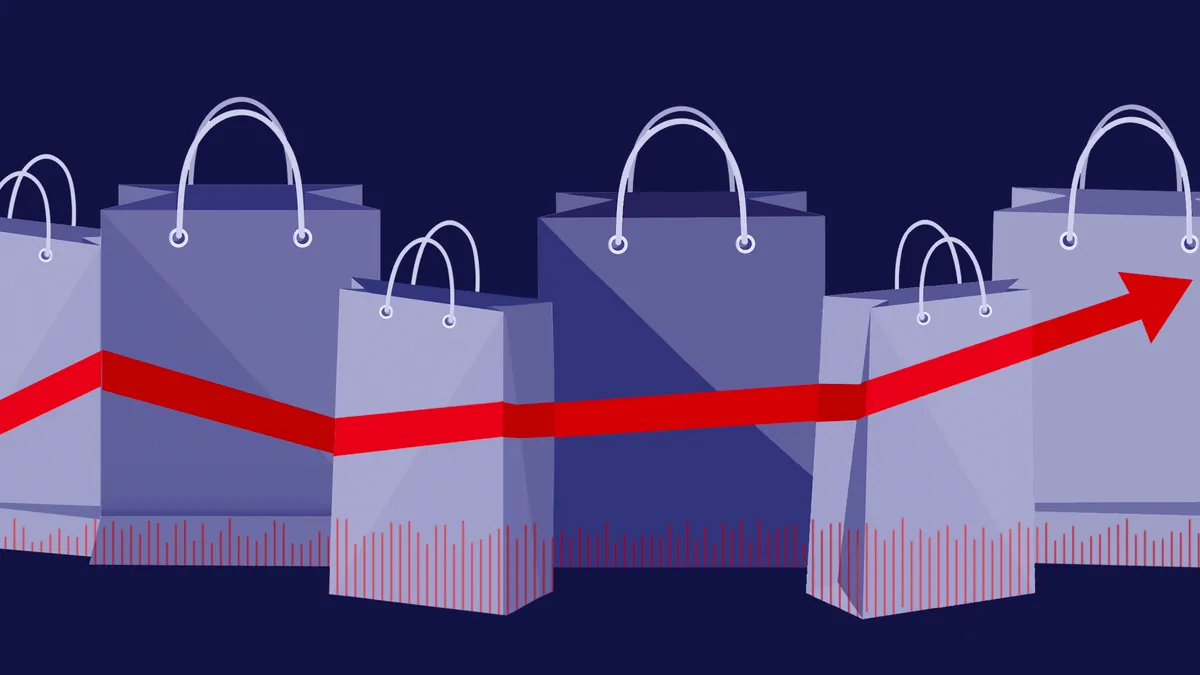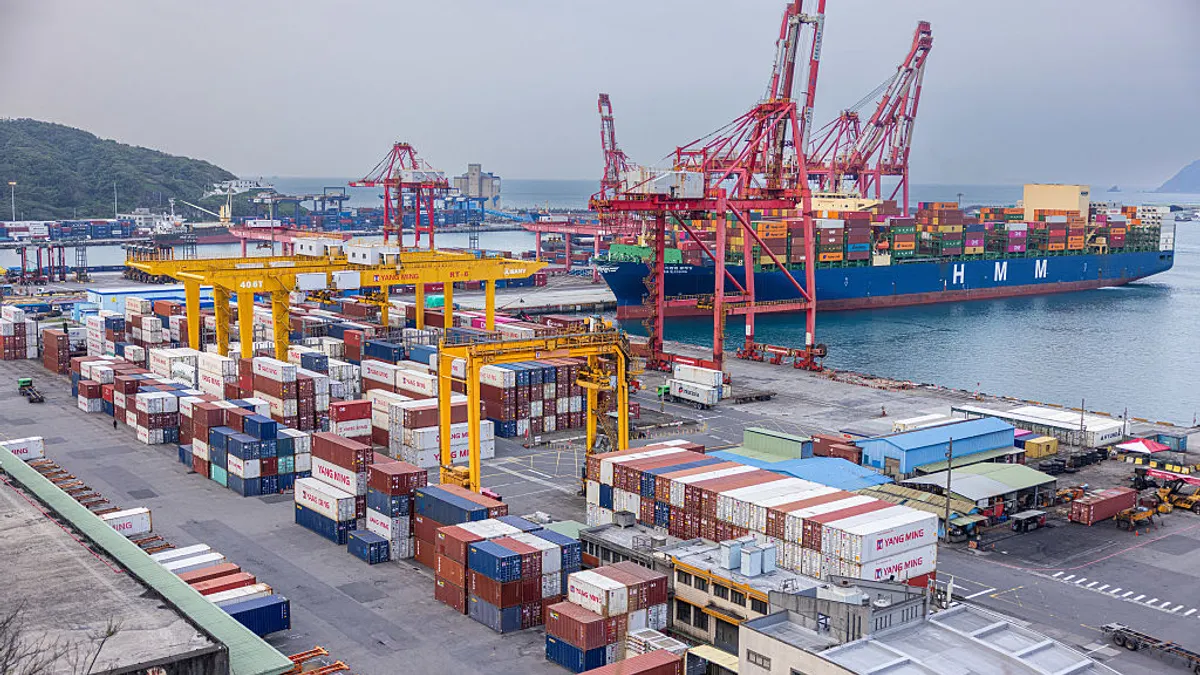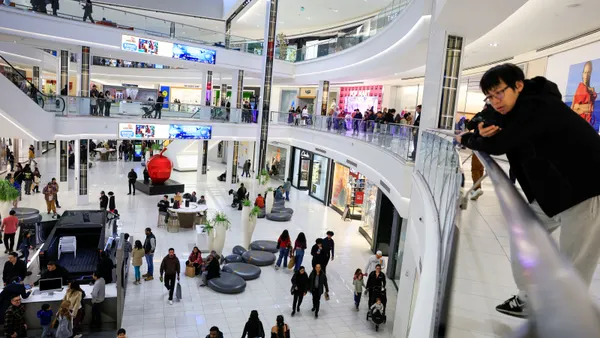Dive Brief:
-
The U.S. retail industry next year is poised for continued growth in sales (4.5% to 5.5%) and operating profits (5% to 6%), thanks to a strong economy plus retailers' investments in e-commerce and the shopping experience in their stores, according to a report from Moody's Investors Service emailed to Retail Dive.
-
Six of 13 retail sectors studied by Moody's analysts will outperform the broader industry. Drugstores, specialty retailers and supermarkets will see performance improve; Amazon U.S. (not including its cloud services) "will continue to grow;" and home improvement, off-price and dollar stores "will continue to perform well," according to the report. Even department store "losses will begin to taper," Moody's said.
-
But there will be headwinds, namely tariffs and higher labor and freight costs, that "could dampen momentum," the analysts, led by Moody's Vice President Mickey Chadha, said. The team pegs total retail sales growth at 3% annually through 2026, according to the report.
Dive Insight:
Retailers have done themselves great favors by moving assertively to grow online channels and to transform stores into places consumers want to shop.
They've also done well by reducing their inventories and tamping down their clearance activity (and, presumably, markdowns), according to the Moody's report. Next year, sales overseas, which have generated 42% of sales, especially in China, along with e-commerce will provide opportunities for growth, Moody's analysts said.
In addition to rising costs from wages and shipping, the economic backdrop, already strong when Donald Trump took office and fueled further by tax cuts, is poised to darken for retailers, according to a report from Wells Fargo economists emailed to Retail Dive. The benefits of the tax cuts "will dissipate in 2019," and higher interest rates are set to slow the housing market, according to Wells Fargo.
"That said, the economy has strong momentum behind it at present, which should keep the expansion intact" through 2020, according to the Wells Fargo Economics Group. "Business confidence is buoyant, thereby underpinning investment spending and employment growth. Real consumer spending should be supported by continued growth in real disposable income, upbeat confidence and record levels of household wealth."
Tariffs are another matter. While apparel and footwear retailers have largely been excluded from tariffs, which have introduced uncertainty but have yet to be implemented by the Trump Administration, they do hover over retailers as a possible threat to margins, Moody's analysts warned. "It would take 12 to 24 months to diversify production and adjust costs" to avoid that, according to the report, and there may not be much ability to make that up through price tags. "Price increases may prove challenging as consumers may not be willing to pay higher prices," according to the report.
As a result, expect to see more cost savings initiatives, more mergers and acquisitions, more restructuring and more focus on e-commerce. To that end, Moody's predicts that direct-to-consumer "drives better control of brand messaging and overall shopping experience [and] better positions companies to where consumers shop" within the next year.














